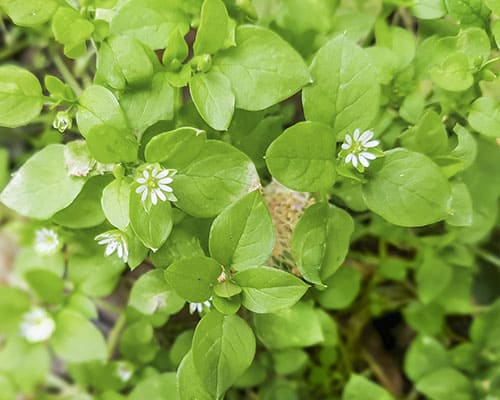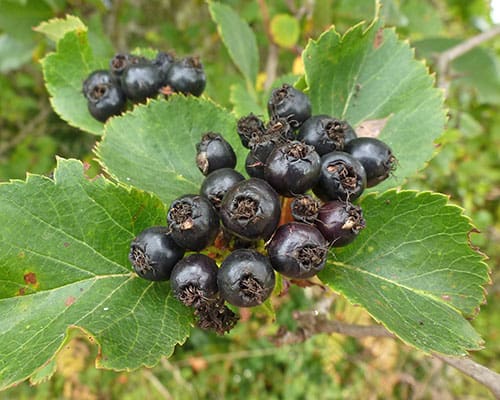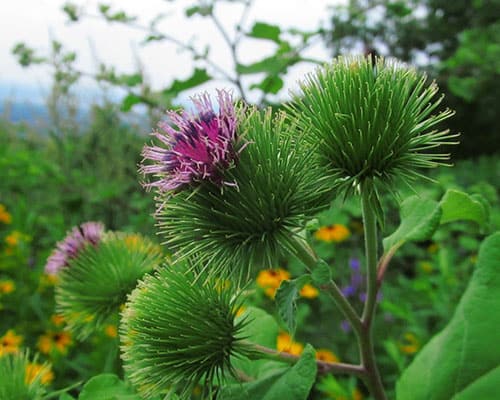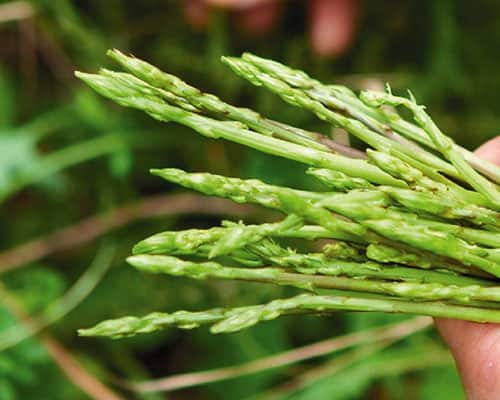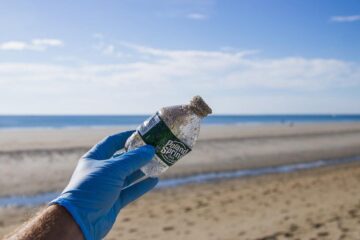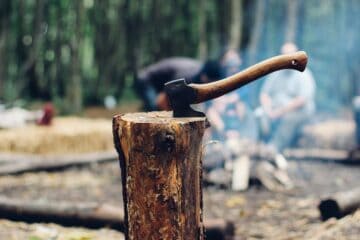Foraging is often touted as a great way to connect with the world, to return to a way of life that sustained humans for countless millennia until the advent of agriculture. And there’s no doubt it can be that. But in a time when uncertainty has crept back into the human equation and we now understand how perilous this whole thing called civilization is, knowing how to forage has taken on new importance.
Foraging can be an extremely useful skill to have in your toolbox if the SHTF for a number of reasons, but primarily because you may not be at home with easy access to your extensive emergency food stockpile when said S*** hits said Fan. In fact your home and your stockpile may be washed away or otherwise obliterated, leaving you in a very tough situation.
But, aside from the fact it could save your life, foraging is a process fraught with potential pitfalls. That’s because if you’re not careful you could wind up eating something you shouldn’t and, well… game, set, match. Below we’re going to provide a list of edible plants you can look for that might tide you over in case of emergency. But before we do that we’re going to go over some foraging basics to help ensure your search for wild edibles has a happy ending.
Some Useful Foraging Tips
Here are a few things to be mindful of before you go rummaging around in the underbrush looking for tasty treats.
Get to know the dangerous plants where you live – Different areas harbor different poisonous plants. For instance solanum dulcamara (1), a variety of nightshade, was originally native to Eurasia but it found its way to North America and can now be found throughout the Northeast and Northwest. The fruit is bright red and tempting but every part of the plant, including that delicious looking fruit, is poisonous.
Don’t depend on sight alone – There are, unfortunately, a lot of plants that are fine to eat that have poisonous counterparts that look just like them. Take some time to learn what different edibles should smell and feel like, as well as look like. That way you can get as many senses involved as possible. One thing to keep in mind is that a lot of poisonous plants smell awful. So if you pick something that looks okay but smells like a dead rat floating in kerosene, don’t risk it.
Know which parts of each plant can be eaten – Just because the fruit or other part of a wild plant is edible, doesn’t mean the whole plant is. Elderberries (2) are a good example. The berries and flowers are quite tasty and can be used in everything from salad to pies, jam and even wine. The rest of the plant, however, is poisonous.
Keep notes – If you find yourself adrift in the aftermath of a societal breakdown or catastrophic natural disaster you may not remember the details about different plants. It’s a good idea to keep notes on what can be found where, the details of the edible food and more. If you believe in being prepared at all times then make a compact version of these notes, have it laminated and keep it with you in your wallet. It could save your skin in a tight spot.
Be careful where you forage – Plants are sponges that soak up whatever is in the ground around them. Unfortunately, that sometimes means heavy metals or other toxins. With that in mind you should be careful where you pick your edible plants. If you have a choice, don’t forage around factories or at the roadside. And avoid large crop fields that have likely been sprayed with pesticides.
Be careful where you forage II – If order has broken down and you are forced to forage, (or even if you’re out for a walk in the woods practicing your foraging skills), be aware of where you are. In the case of societal meltdown, if you cross onto someone’s property things could get very ugly, very fast. Even under normal circumstances a property owner may take exception to your presence.
Be respectful of the surrounding vegetation – We assume you are going to practice your foraging skills prior to the apocalypse. In which case we would urge you to be respectful of the vegetation surrounding the target of your foraging attention. There is no need to run roughshod over the landscape in pursuit of your edibles. Just take what you need and leave the rest alone.
Be aware of the law – The law is unclear when it comes to foraging, except that it’s not okay to trespass on private property to forage, and unauthorized foraging is not allowed in national parks. That’s right, the US Forest Service wants you to get a permit (3) before you start picking those wild plants in Yellowstone or Yosemite. You probably won’t wind up in jail if you get caught foraging without a permit, but you may incur a fine.
When in doubt, don’t – Whether you are an absolute beginner when it comes to foraging or have years of experience, this is the golden rule. If you are not certain – as in 100% sure beyond any doubt – that what you’ve foraged is edible, don’t eat it. It’s just not worth it.
11 Edible Plants You Can Forage in the US
Now that we’ve got those tips out of the way, here are some edibles you can forage that are common in many parts of the US.
Sorrel
Sorrel is widespread throughout temperate zones and is often mistaken for shamrock due to its heart-shaped leaves. The wood sorrel plant typically grows between about 8 and 15 inches tall. The heart-shaped leaves are bright green and have a crease running down the middle of them. The flower of the sorrel plant is usually yellow, but it may be burgundy or even purple.
Sorrel typically has a lemony flavor to it and can be used in a variety of dishes, most commonly soup, stew and occasionally, salad. Sorrel is a good source of iron and vitamin C but it’s not recommended that you eat in large quantities like you might lettuce. Mostly because it contains oxalic acid (4) which can cause stomach upset, diarrhea and more.
Dandelion
If you have a yard you probably don’t have to look any further to find an abundant source of edible wild plants. Those dandelions that pop up on your lawn and drive you crazy are actually good for you. They are one of the few wild foods that are completely edible, right down to the roots. When eaten raw they have a bitter taste, but cooking them tends to eliminate the bitterness.
Dandelion is rich in nutrients including vitamins A, C, E and K as well as calcium, manganese and iron. You can eat dandelion by itself, throw it into soup, or dry the leaves and use them to make tea. Dried and ground dandelion roots can also make what some people consider to be a very acceptable substitute for coffee (5).
Chickweed
Chickweed may not have the visibility of dandelions but it is widespread throughout the northern hemisphere, especially in the cool upper latitudes. Chickweed was popular during colonial times but never made the leap to the modern kitchen, likely because it doesn’t take well to refrigeration. That means it should be eaten shortly after being harvested.
Chickweed leaves are more or less pear-shaped (individual leaves tend to vary a bit) and the flower (which is also edible) is small with up to 10 white petals. Chickweed is as versatile as it is plentiful. You can put the leaves directly into a salad and eat them raw. Or, if you want to use more of the plant, you can add it, stems and all, to your soup or stew.
Wild Garlic
Wild garlic is fairly common in eastern Canada and the northeast quadrant of the United States bounded by South Carolina, Maine, Missouri and Minnesota. The leaves of the wild garlic plant bear more than a passing resemblance to the leaves of a corn stalk. But don’t expect to be harvesting big bulbous cloves of garlic from wild garlic.
Instead, it’s those big, corn-like leaves as well as the flowers that you’ll want, as both can produce that garlic flavor we all love so much. It’s not as potent as the garlic you know but the garlic taste is still there. It can be a great addition to almost any dish to which you would normally add cloves of garlic.
Black Hawthorn
There are dozens of varieties of hawthorn but black hawthorn is one of the most common in North America. It can be found in large areas of the Pacific Northwest. The black hawthorn tree grows up to 30 feet high with berries that, in some respects, resemble blueberries. Hawthorn berries can be eaten raw right off the tree. Just make sure you spit out the seeds as they are mildly poisonous.
As we said there are lots of varieties of hawthorn and it grows across Asia and Europe as well as in the Americas. Another variety that is popular with US foragers is Chinese hawthorn which produces a red berry that has been eaten by the Chinese as a snack for thousands of years. Chinese hawthorn (crataegus pinnatifida) is not as widespread in the US but can be found in parts of the upper midwest.
Burdock
Burdock can be found in almost every state except Florida and Hawaii. You have probably seen it growing beside trails and roads and not given it a second thought. Burdock (arctium) used to be something of a staple of the American diet during the colonial period but fell out of favor when other vegetables began to be cultivated en masse and made available in stores and supermarkets.
Burdock plants can get pretty big, sometimes up to 8 or 9 feet high and some of the leaves are huge, although they get smaller the higher up the plant you go. The flowers are pink-ish and bristly and the seeds are covered in brown burs that often get stuck on the clothes of hikers. Several parts of the burdock plant are edible including the flower stalk, leaf stem and root. Mature roots often resemble carrots and are good in soups and stews. Leaves are not poisonous but taste awful.
Nettle
Nettle (also called “stinging nettle”) made its way to North America from Europe several centuries ago and has spread throughout much of the country. The plants grow up to 5 feet high and have large dark green leaves with saw toothed edges. Nettle gets its “stinging” label because of tiny spines on the underside of the leaves that penetrate the skin and inject histamines, formic acid and other toxins causing the stinging sensation.
This unpleasant defense mechanism aside, stinging nettle is rich in nutrients and is sometimes compared to spinach. Those painful leaves are the edible part so you’ll have to be careful and wear gloves while harvesting them. Choose young healthy leaves and throw them into a pot of boiling water to neutralize the toxins and soften those nasty spines for consumption.
Elderberry
Several different species of the elder plant can be found in North America including black elder and American black elder which are found in the eastern US, blue elder which is found west of the Rocky Mountains and red elder which is found in most states. Black, American black and blue elder all produce edible berries that have been known to Europeans for centuries and are used to create everything from jam to wine.
The seeds of all elderberries are poisonous and should not be consumed, and red elderberries themselves are considered poisonous if eaten raw, but can be consumed if cooked thoroughly first. Elderberries are rich in vitamins, minerals and antioxidants. Typically, elderberries appear between July and September. Know the elder bush by its complex branching system, almond-shaped leaves with serrated edges and its size, which can be up to 8 or 10 feet high.
Yarrow
Common yarrow (achillea millefolium) is a small insignificant looking plant. While it’s capable of growing in most places throughout North America, it prefers sandy soil and sunny locations. It is often seen in fields, subalpine zones and along the side of roads. Yarrow has long been known to practitioners of folk medicine for its wound healing abilities, something to keep in mind if you’re hiking in the woods or wandering the post-apocalyptic wasteland and injure yourself. Just chew up some of the leaves and apply them to the wound.
Yarrow almost never grows more than about a meter high and appears to be mostly stalks and flowers. But the leaves are there. They are fairly small and have a spine running down the center off of which sprout lots of tiny leaflets. Overall, the plant has a fern-like appearance. The leaves of the yarrow plant can be eaten raw or cooked and are often added to salads and soups. If you eat them raw, be prepared for them to taste bitter. The flowers can be dried and used to make tea.
Blackberry
Wild blackberry can be found in much of the US, most commonly in what are called “disturbed areas” along the side of trails or roads through the woods. Blackberry plants have leaves in the shape of a pointed oval with sawtooth edges and they typically grow in thorny brambles. Blackberries usually appear in the summertime and it’s common for people in various parts of the country to collect and eat them.
Blackberries are rich in vitamins and are a good source of manganese (6). You can do lot of things with wild blackberries including make jelly and jam, put them in pies, mix them into shakes and smoothies, and of course, eat them raw after picking them. Another good thing about blackberry is that its look alike plants – including olallieberry, marionberry, boysenberry, loganberry, and dewberry – are also safe to eat.
Wild asparagus
Most people are unaware the asparagus grows wild in much of the United States, particularly in the Northeast and along the west coast. Wild asparagus typically grows near sources of water, but not directly in them. It also needs direct sunlight. So look for it next to streams or irrigation ditches that run through fields. Just be careful not to trespass on someone’s property to get it.
Wild asparagus looks much like its cultivated cousin except that the stalks are noticeably thinner. Beyond that, however, the taste is similar and asparagus, no matter where you get it, is loaded with vitamins and minerals, including potassium (7), thiamine (8) and vitamin C.


